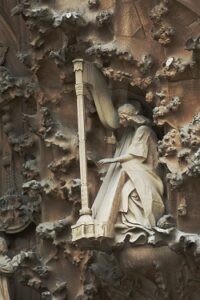
There’s approximately ONE TON of information that I could include in this article, ranging from Gregorian chant to early American shape-note singing to the great Alice Parker and her arrangements for the Robert Shaw Chorale, of which “Hark” is one of many. I’m going to rein myself in at least somewhat, though, fascinating as all of this is.
Let me just briefly say first of all that we haven’t, of course, always had the musical notation that we have today, nor have we had the mathematical theory behind it. The Greek mathematician Pythagoras is the one who came up with at least the basic ideas of how pitches work. (So he wasn’t just about triangles.) He figured out that a plucked string vibrated at a certain frequency, or pitch, and that a string half that length vibrated an octave above it. In other words, the same note, but higher. I guess one of these days I’ll have to read up on how he figured all of this out, if indeed we have any info about that process at all. Then, as far as we know, it took only about 1500 years for the notation system of today to get its start, in connection with what we call “Gregorian chant,” used in services of the Roman Catholic Church. But this system didn’t really specify pitches but only direction of pitches—up or down. Someone who knew the melody had to teach the monks or nuns or whatevers the actual tune. The music, an oral (or aural) medium, had to be passed down orally, that is, by memory. But that idea shouldn’t be terribly strange to us, as we know that verbal material was also passed down orally. Ancient poets and bards who didn’t have access to writing recited long stories that they had learned “by heart.”
